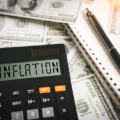There Is No Such Thing As Student Debt Cancellation
President Biden finally announced his promised student debt relief program. The government will forgive up to $20,000 of student debt for Pell Grant recipients, and up to $10,000 for others with an annual income below $125,000 ($250,000 if married). On top of this, he is extending the grace period on student loan repayment until the end of the year. The plan is estimated to cost $24 billion per year for a decade, for a total of $240 billion.
The victory lap surrounding the announcement suggests the government does not fully understand its own policy. Consider two representative politicians, Kamala Harris and Elizabeth Warren, who describe Biden’s policy as debt “cancellation.” Recent columns in Forbes and CNET show similar statements. The word “cancel” is very telling; it gives the impression that student debt disappears. The cancellation narrative is reinforced by advocates talking about the benefits of the debt relief, while remaining silent about its costs. There is no such thing as debt cancellation. The loan will be repaid. The only question is who will foot the bill. Recognizing that the Biden administration’s policy merely shifts the burden from some Americans to other Americans, the economic and ethical questions involved are more salient than many realize.
The student debt forgiveness policy means the government will forgo roughly $240 billion in payments over the next decade. How will it deal with this revenue shortfall?? There are a few possibilities. The government may:
- Cut spending
- Raise taxes
- Issue debt
- Create money
The options are not mutually exclusive. The government might employ some combination of the four. But, no matter how you slice it, that $240 billion dollars will come from somewhere. Basic accounting requires it.
Further, the idea that the government is footing the bill for this policy is a bit misleading. The cost of the program does not fall on the government. It falls on those who miss out on expenditures that would have otherwise occurred, those who pay higher taxes as a result of the program, those who pay higher interest rates or are crowded out due to additional government borrowing, or those who see the purchasing power of their dollars reduced more than usual.
Remember, the government cannot give without taking.
Biden’s student debt forgiveness policy raises important ethical questions. For example, individuals making up to $125,000 a year qualify. But median income in the United States is only around $45,000. Why should low-income Americans pay for loans taken out by those who earn much more?
There are other equity issues, as well. Some students and graduates sacrificed consumption to pay down their loans more quickly and, as a result, will not see as much of their debt forgiven. Those who made the minimum payments or no payments at all will benefit. Those who have repaid their loans in full receive nothing. Why are those who have repaid their loans less deserving of financial assistance than those who haven’t?
Further, the possibility that such a policy will be enacted again seems likely to create further problems. Lawrence White predicts individuals will be more inclined to take out larger loans, at higher rates, because there is now a greater chance that Uncle Sam will force someone else to pay for it at some point in the future.
There is no denying that some Americans are struggling, and some of those struggling have student debt. If the Biden administration is genuinely concerned about those struggling, it could provide greater assistance to those with low incomes. If it is genuinely concerned with those struggling to repay their student loans, it could have phased out the debt forgiveness over a much lower income threshold. That it took neither of these paths suggests it is primarily concerned with winning votes from educated elites in the next election at the expense of everyone else.
*****
This article was published by AIER, the American Institute for Economic Research, and is reproduced with permission.




